 © 2020 Thermaco Inc. All Rights Reserved / Privacy Policy
© 2020 Thermaco Inc. All Rights Reserved / Privacy PolicyWHAT IS A GREASE TRAP?
A grease trap is something kitchen wastewater flows through before entering the sewer waste system. This device — technically a grease interceptor — intercepts, captures or "traps" grease. How?
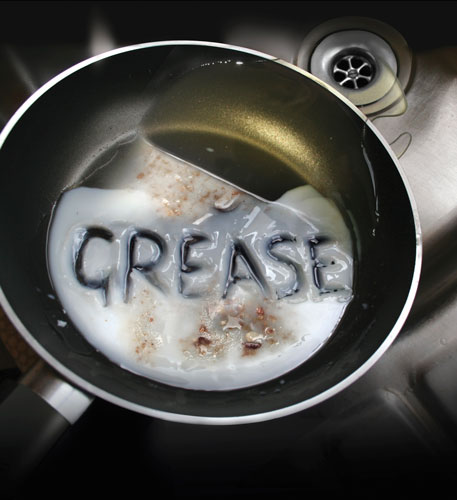
Grease -- the industry term for animal fats and vegetable oils (FOG) -- is 10 to 15 percent less dense than water and, as a result, floats on top. When kitchen wastewater flows through a grease interceptor, FOG rises to the surface thanks to an engineered system of baffles, plastic wall structures that slow down the flow of water. This gives FOG time to rise to the top, while FOG-free water exits out from the bottom of the trap into the sewer lines.
When enough grease accumulates in the grease trap, it must be emptied. This can be a manual process, or sometimes involves a pump truck and other specialized equipment. Automatic grease interceptors, including Big Dipper models, skim away the grease layer into a storage container. This container can easily be emptied by kitchen staff. Still, kitchen staff need to periodically clean filters designed to catch small food particles, which is why we introduced Advanced Maintenance Assistant. This new option automatically sends these particles down the line so you don't have to.
See how a grease interceptor like the Big Dipper works!
WHY DO I NEED A GREASE TRAP?
Sewer collection systems take waste water to a treatment plant. They are not designed to handle grease.
Grease (especially grease with animal fats) cools and solidifies at normal temperatures in pipes. That cooling, as well as other chemical reactions in sewer lines, causes blockages in the sewer pipes. These blockages can eventually cause backups called sanitary sewer overflows (SSOs). Overflows are a significant public health risk and require specialized equipment, time, and manpower to clear.
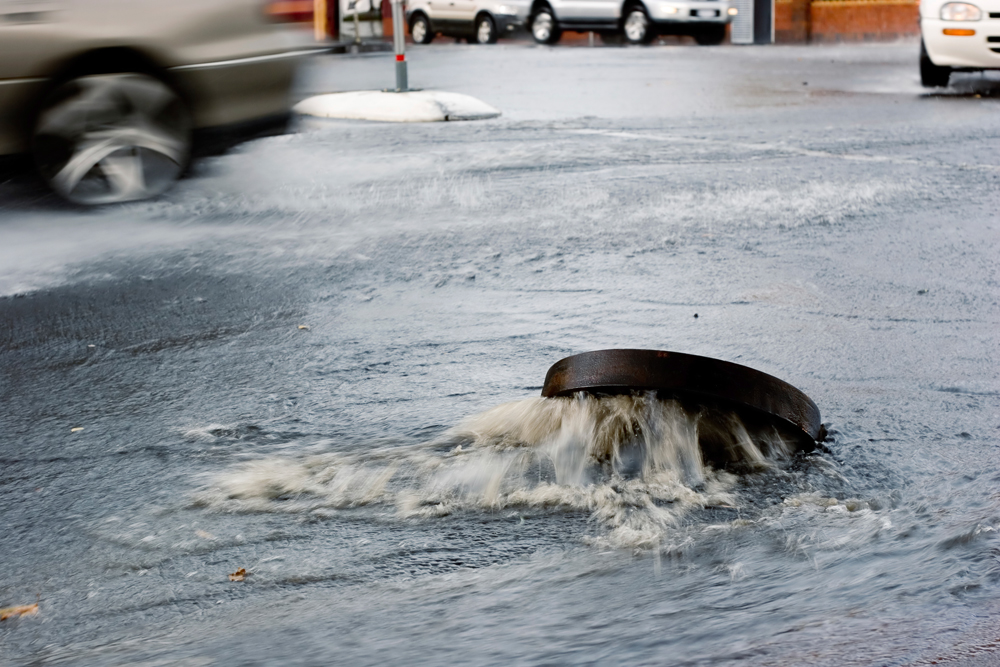
For this reason, many cities require the use of grease traps at locations that prepare food items to ensure grease doesn’t block sewer lines and lead to sanitary sewer overflows.
In some situations, a grease interceptor can save the restaurant money as well. Any kitchen with long plumbing runs to the sewer system, such as a mall, hospital, or restaurant inside of a large building runs the risk of blockages in internal pipes. Those blockages could lead to backups, fines, and even downtime while repairing internal plumbing.
A passive trap that’s not cleaned out regularly will begin to leak grease into the sewer system. This can cause blockages and sewage backups. Improperly maintained grease traps (or the failure to install a grease trap when required) often leads to fines, down-time, and bad publicity.
TYPES OF GREASE INTERCEPTORS
The idea behind grease traps is pretty simple. So why are there so many types of grease interceptors? And how are you supposed to choose the best one for your commercial kitchen? You didn’t get into this business to spend hours researching which grease interceptor is the best for you.
Thermaco has been in this industry for more than 35 years. Thermaco interceptors, like the Big Dipper and Trapzilla, are in 10,000+ commercial kitchens on all seven continents. We’ve seen practically every type of grease trap and grease interceptor there is. Let's start with the four major types.
-
 SMALL PASSIVE HYDROMECHANICAL GREASE INTERCEPTORS (HGI)
SMALL PASSIVE HYDROMECHANICAL GREASE INTERCEPTORS (HGI)
Hydromechanical grease interceptors (commonly called grease traps) are usually installed underneath the 3 compartment sink or in the floor of the kitchen. They trap grease over time and need to be pumped frequently, sometimes even weekly. They may be less expensive upfront, but they cost more to maintain due to frequent cleaning. If they aren't maintained properly, they may stop holding grease and put your commercial kitchen at risk for a blockage.
-
GRAVITY GREASE INTERCEPTORS (GGI)
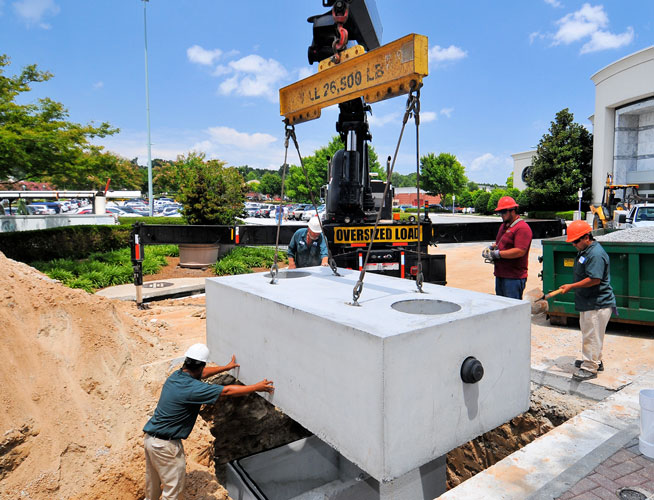 Gravity grease interceptors are often made out of concrete, but can be made out of steel, fiberglass, or plastic. These interceptors usually hold 500 gallons in liquid capacity but can only hold a small percentage of that capacity in grease. They are not certified to meet any efficiency standards, so cities require them to be pumped out once the grease and solids reaches 25% of the contents. Gravity grease interceptors are usually pumped every 90 days with a pump truck and specialized equipment; this can cost hundreds of dollars in maintenance each year.
Gravity grease interceptors are often made out of concrete, but can be made out of steel, fiberglass, or plastic. These interceptors usually hold 500 gallons in liquid capacity but can only hold a small percentage of that capacity in grease. They are not certified to meet any efficiency standards, so cities require them to be pumped out once the grease and solids reaches 25% of the contents. Gravity grease interceptors are usually pumped every 90 days with a pump truck and specialized equipment; this can cost hundreds of dollars in maintenance each year.
GGI's can also degrade, fail and require replacing as often as every 10 years. These are typically buried in the ground, and replacement is an expensive process requiring heavy equipment. For kitchens that produce a limited amount of grease, or are located on small sites or in nontraditional locations, GGIs are usually not practical.
-
Automatic grease/oil recovery systems such as Big Dipper
 Automatic grease removal devices or recovery units offer an alternative to hydromechanical grease interceptors in kitchens. While their tanks passively intercept grease, they have an automatic, motorized mechanism for removing the grease from the tank and isolating it in a container. These interceptors must meet the same efficiency standards as a passive HGI, but must also meet an additional standard that proves they are capable of skimming the grease effectively.
Automatic grease removal devices or recovery units offer an alternative to hydromechanical grease interceptors in kitchens. While their tanks passively intercept grease, they have an automatic, motorized mechanism for removing the grease from the tank and isolating it in a container. These interceptors must meet the same efficiency standards as a passive HGI, but must also meet an additional standard that proves they are capable of skimming the grease effectively.
They are often designed to be installed unobtrusively in your commercial kitchen, in a corner or underneath a sink. The upfront cost of these units can be higher, but kitchen staff can handle the minimal maintenance required to keep these units running smoothly. You won't have to pay regular pumping fees, saving your business operating costs over the long term. Plus, the compact design of Big Dipper units means they can fit in tight confines and makes them easy enough to install as a quick DIY project. Just attach the pipes, plug in and go.
GREASE TRAP EFFICIENCY AND DESIGN
One factor that’s important when choosing a grease trap is efficiency. More efficient grease traps can remove and store more grease from your kitchen wastewater, lowering the chance of blockages and overflows.
Grease traps have been around since the 1880s, and many grease interceptors still use the same basic design as those early models. But design and engineering innovations in more recent years have allowed companies to develop new designs that are more efficient, longer lasting, and easier to use and maintain.
Automatic grease interceptors, like the Big Dipper, work a bit differently than traditional grease traps. Grease is skimmed out automatically on a pre-programmed schedule based on the amount of grease produced.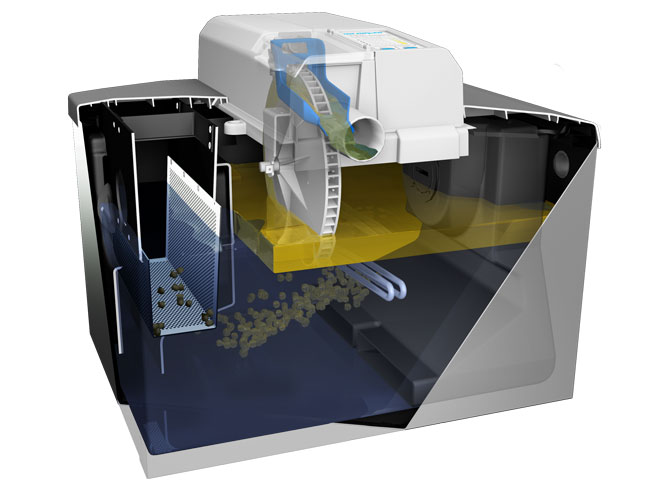
Automation means employees don't have to check grease levels. The grease in these automatic systems accumulates in a separate chamber and is simply disposed of, usually by throwing it into the trash or putting it into a container that a recycler picks up.[MT4]
While more expensive to purchase, automatic grease interceptors give food service establishments control over their grease waste management and save them from paying service companies weekly or monthly fees for emptying the grease interceptor.
HOW DO I START?
Now that you understand what a grease trap is, how they work and the different types of grease interceptors available on the market, are you ready to figure out exactly which grease interceptor will work best for you?
We’ve got an easy three-step process:
 1. Use our easy online sizing calculator and proposal request system to determine the specifications for your commercial kitchen and receive a free proposal. We can also help with any regulatory issues and other considerations.
1. Use our easy online sizing calculator and proposal request system to determine the specifications for your commercial kitchen and receive a free proposal. We can also help with any regulatory issues and other considerations.
2. Schedule installation by a qualified local contractor. If you don’t already have a contractor selected, we can help you find one.
3. After your grease interceptor is installed, go back to focusing on what matters most to you — the customer experience — knowing your commercial kitchen is in compliance with local water and sewer regulations..
Not quite ready yet? We understand.
Maybe you want more information on how to select the best grease trap for your food service facility. Click here for a free guide that walks you through, step-by-step, the pros and cons for each type of grease interceptor and how to choose the one that will work best for you.
Or maybe you have other questions about grease interceptors. Here are some additional resources to help.
· Replacing a grease trap? Here’s a few factors to consider
· How to calculate the total cost of ownership of a grease trap
· Grease interceptor design: a life-or- death decision
· Why concrete interceptors ought to be left in the history books
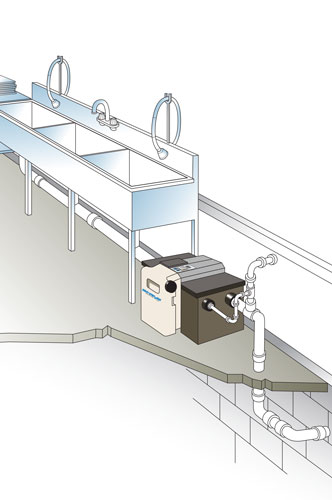
By understanding what a grease trap is and how different types of grease interceptors work, you’ve taken the first step in making the best possible decision for your commercial kitchen.
Once it comes time to purchase and install an interceptor, you’ll be confident you’re making the right choice. You won’t have to worry about overflows, surprise expenses, or other unexpected surprises. Instead, you’ll be focused on creating a great customer experience!
Feel free to contact Thermaco directly for specific assistance on choosing the ideal grease interceptor for your commercial or institutional foodservice operation.
